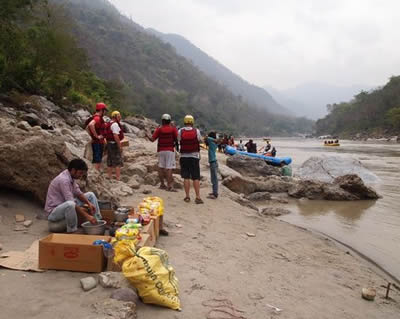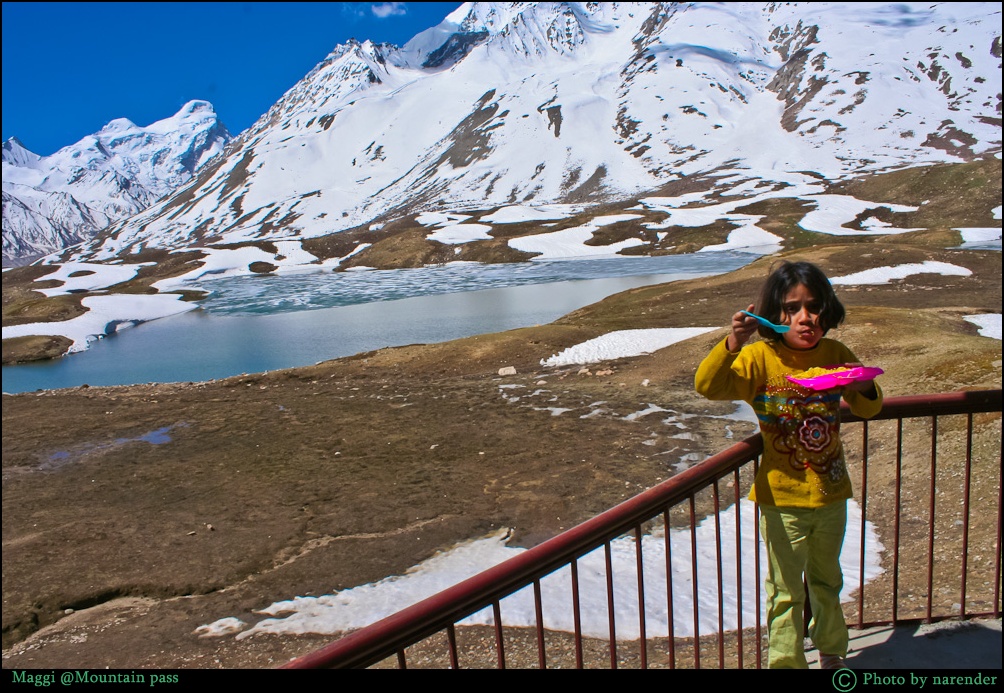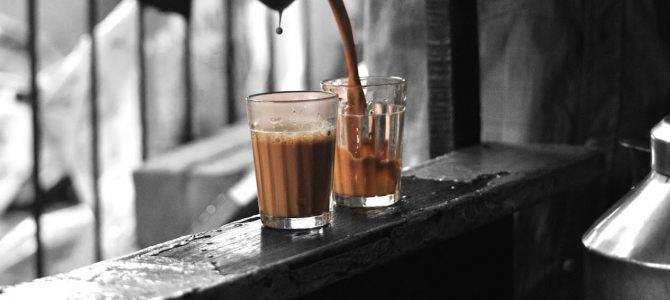The rampancy of Corona virus has put a suspension to everyone’s travel plans. In most cases, not only are you forbidden from going to another city, but also forbidden from commuting to another part of your own city. Since modes of transport have been brought to a halt by the suspension of bus, train and plane services, there is no question of planning a hobby travel for at least another month. In fact, we’d even be grateful if regular routine returns to normalcy. During such times, you can only relive some of best travels through photos and videos. But what about another way to relive your best travel moments in a more active way? What if you can reproduce the aromas and flavours of the lands that you have been to?
Importance of food to India
Food is an extremely important aspect of day-to-day life in India. Celebrations are incomplete without festival-specific delicacies. We invite friends over for tea, but the table has 20 more items to go with tea. There are regional variances in food, each teaching us new flavours and new aromas. Food is an excellent way to understand different regions and cultures in India.
Food breaks are extremely important for Indians. Lunch break is an important social meeting for Indians. In cosmopolitan cities like Mumbai (where we live), it is common for colleagues hailing from different parts of India to bring their regional delicacies and share them. During family travels, the tourists consume a lot of food in between activities. Frequent travellers even know which restaurant to visit at a specific destination, as they have built a loyalty to specific places.
India gives food break a whole new meaning. Heck, in no other country do you stop a 11 kilometre white water rafting session to take a food break! In Rishikesh, all rafting boats stop by a specific point on the bank of the river where it calms down. This is to take a tea and Maggi break. In Himachal Pradesh’s Sar Pass, there is a Sherpa who sells tea and Maggi near the summit. Many trekking camping points in India have small eateries run by locals, because the locals know that those spots are camping spots and that the trekkers will inevitably look for food and snacks while resting in their tents.

This place halfway between Shivpuri and Rishikesh is used by all raft operators to stop for a Maggi & Tea break. The water is calmer and rafts can be docked to a side. You can see a raft parked. Some participants, still wearing their helmets and life rafts with the intention of continuing to raft, have gotten off to enjoy tea and possibly Maggi.
During a nation-wide tour, you will have eaten so many unique items at so many unique places that you will remember them forever along with everything about the place. A single whiff of momos in your home city may transport you back to Gangtok. The taste of well-made Parathas in Mumbai will transport you back to Punjab. Fluffy idlis eaten at Mathura will take your memory back to Thanjavur and so on.
Food as a way to relive travel
Priya’s thoughts sometime way before India 360: “Whenever I am at a unique place, my eyes enjoy the new sights and my ears are alert to new sounds. My nose is taking in the scents of the ambience around me, say the scent of pine trees or flowers on a hill, the aroma of tea stalls in a city or the fragrance of lemon grass in a spa. My skin is feeling the air and the texture of materials around me. The only thing that is disengaged is taste. So I make it a point to buy something to eat as that taste becomes the memory of that place. E.g. Maggi is a recollection of Himalayas and pongal that of Tamil Nadu. In fact, the taste of custard brings back memories of my mountaineering training in HMI. Because they used to serve custard with dinner at the camp everyday.”

Memory fuelled by multiple senses is highly sticky. In the future, this kid will probably always remember this snow peak and the lake at the slightest aroma of Maggi, which she is eating from the pate.
There is no doubt that taste is a sense and induces lingering memories of the source of the taste. So why not do some homework and travel using your senses from your kitchen?
Get your kitchen ready
Here is a minimum set of tools you need to prepare your kitchen for making delicious dishes from all over India.
A good sharp kitchen knife: Most Indian dishes have diced vegetables sprinkled, curried or sauteed instead of raw or whole. Dicing vegetables brings out the taste that otherwise would not have been released from its depths. E.g. Onion, curry leaves and corriander release their essence only after they are chopped or crushed.
A skillet, an open pan and a closed pan: A skillet is a deep pan with a handle. It is typically used in India to make tea, soups and things which have gravy. You can also stir fry dry ingredients in a skillet, but that’s what a pan is for. When I use the word pan, I am referring to a shallow vessel. This is great for sauteing and stir frying. But that’s the purpose of an open pan. A closed pan has a lid which can be used to trap the heat inside the vessel and cook food deeper and faster. This is useful for steaming small quantities of food or for cooking ingredients that take time to soften, e.g. beet root.
Measuring cups and mixing bowls: These are not confined to the western world. India too makes a lot of items that need batter. To get the batter right, the proportions of the ingredients should be right. In come measuring cups and mixing bowls. India uses its own units for measuring, most units specific to a region. But we at India 360 have adopted the western measurement of cups, tea spoons and table spoons since that has worked well for us.
Spatula and vegetable masher: Indian cooking requires stirring and mixing various ingredients together, especially masala powders in gravy. A spatula is a must. In addition, some traditional methods require that you mash chopped vegetables while they are heating up and softening in a pan. The vegetable masher is used to mash vegetables while they have turned very hot inside a hot pan. Of course, this can be avoided if you use a mixer to puree and then use the puree in the pan. But some veterans disagree with this method for dishes like pav bhaji, saying that the systematic and continuous mashing over heat leads to a better texture and allows masala to mix well with the puree.
Grater: This is for grating vegetables and cheese.
Mixer-grinder, electric pressure cooker, microwave oven: The comforts of a modern kitchen. Indian cooking doesn’t strictly need these, but they make things much faster than the traditional methods. Mixer is used for pureeing, pressure cooker for steaming. Microwave oven is quite versatile, but its main purpose is baking and roasting.
Additional things you’d want
A partner to enjoy cooking with: Travelling is best done with a life partner. Same is the case with cooking. Get together in the kitchen the same way you’d be together in your travel plans.
Plenty of podcasts: Compared to most western cooking which involves a few items boiled, sauteed and served, Indian cooking takes plenty of time as the ingredients undergo an adventurous journey from raw ingredients to a masterpiece bursting with texture, taste and aroma. Indian cooking brings out the soul of every ingredient. Good things take time, but they are worth it. While at it, you should listen to podcasts and learn new things.
Our regional reliving meals
While it is difficult to incorporate every regional cuisine of India into your routine, you will be prepared to enjoy more variety if you plan in advance. You should plan a menu in advance every week, so that you can buy the utensils and ingredients ahead of time, typically in your weekly shopping. We make such weekly plans too. Our first meal of the day, i.e. breakfast has so much variety that the same breakfast item does not repeat for nearly three weeks. We are gradually bringing more variety to our lunch and dinner too. Here are some regional dishes we make regularly these days, along with the regions they remind us of. You can get inspired and search for them. Or you can make your own list based on where you have been.
- Bombay veg sandwich with chutney and ketchup (Mumbai. All regional quests begin from home 🙂 )
- Kanda (onion) poha, upma, misal, pithala (Maharashtra)
- Pongal (Tamil Nadu), medu vada, idli, dosa, filter coffee (Tamil Nadu & Karnataka)
- Panihara, Neer dosa, Rava dosa, Mysore masala dosa (Karnataka). Neer dosa is also made in Maharashtra’s Konkan region and is called Ghavne.
- Kladi (Jammu) is a patty made of cheese. It can be served with kulcha, bread or pav.
- Ghugni toast (West Bengal)
- Khaman dhokla, besan wadi (Gujarat)
- Paneer paratha with curd (Punjab, Himachal Pradesh). We avoid aloo (potato) parathas.
- Pesarattu (Andhra Pradesh). it is a dosa made of moong (green gram) and is also called Hesaru dosa in Karnataka.
- Omelette roll, i.e. omelette rolled and wrapped inside a chapati. Since we are vegetarians, we make the omelette from besan / gram flour. (Assam, Meghalaya and Mizoram)
- Chilla, which is dosa made of besan / gram flour (Delhi, Haryana, Uttarakhand, UP)
- Chhole (Delhi, Punjab, Haryana, Jammu)
- Kulcha (Punjab)
How you can start
Even if you have had all these items several times during your travels and some of them look really simple, you will often make mistakes without the right, authentic procedure. Here is a list of YouTube channels / blogs that you can refer to for various regional dishes. Note that most chefs are good at several items, but some of them make things more authentic than the others, especially the dishes specific to their native region.
Here is a list of channels by regional speciality
All India: We always start with this excellent cooking channel by Hebbar, a Tullu speaking woman now living in Australia. Here channel is Hebbar’s Kitchen. In short 2 – 4 minute videos and with just captions and without voice, she is able to show you so many dishes from India and some international ones too. The problem with her channel is that it isn’t easy to get help when things go wrong. In cooking, it is important to know what NOT to do along with what to do. We use Hebbar’s channel as a starting point to get as much information about a recipe in a couple of minutes. Then it’s time to deep dive into more specialised channels.
Maharashtra: (Hari’s opinion, since Priya hasn’t learnt Marathi yet): My favourite channel for Maharashtrian delicacies is a channel named Madhura’s recipes. However the narration by the host Madhura is in Marathi, so those not familiar with the language will not be able to get any value. Madhura is very good at cautioning and reminding us what not to do and also gives tips to make dishes tastier. If you do not speak or understand Marathi, the next best option is Rajshri Food. The host is Maharashtrian, but he narrates in English. Authenticity in a widely spoken language. Win-win 🙂 Next up is the India’s own Julia Child, the late celebrity chef Tarla Dalal. While Dalal, her post-marital surname, was a Gujarati surname, Tarla was born as a Maharashtrian in Pune. So she was good at Maharashtrian dishes.
Karnataka: Hebbar herself is a native of Karnataka and has covered several dishes from the state. Another good channel to refer to is Swasthi’s recipes.
Tamil Nadu: Our favourite channel is Agrahara Samayal (Brahminical cooking) by an elderly Brahmin lady who now lives in United States. Since we are Tambrahms (Tamil Brahmins), her cooking works best for us. And so does her extremely Brahmin-accented narration style in Tamil 😀 But that exactly is the problem for non-Tamils. If you want an English-language channel with authentic Tamil dishes, check out Padhu’s kitchen.
Punjabi: Chef Harpal Singh Sokhi, a protege of star chef Sanjeev Kapoor, is spot on with Punjabi dishes, with excellent tips and short cuts to speed up your cooking and to make things tastier. His Hindi, spoken with a heavy Punjabi accent, is music to ears! Although Harpal is fluent in English, he prefers to run his channel in Hindi since that’s what most of his target audience are comfortable with. If you are looking for an English-language channel with Punjabi dishes, then look no further than the baby-faced host of the channel Cooking Shooking.
Gujarati: After marriage, Tarla shifted to Mumbai with her husband Nalin Dalal. With the help of the sizeable Gujarati community is western Mumbai, Tarla mastered Gujarati dishes and the language expertly. She is the best source for Gujarati cuisine.
Non-vegetarian recipes adapted with vegetarian ingredients: Tarla Dalal is once again the champion of converting non-veg dishes into equal good tasting veg dishes with the best substitutes.
Exotic recipes: Celebrity chefs Sanjeev Kapoor and Tarla Dalal (incidentally both are Mumbai-based, so proud of them 🙂 ) are the best sources for exotic recipes from exotic lands as they bring in dishes from south America, Carribean, France and Italy and add their own Indian flavours.
British recipes: British celebrity chef James Oliver is a excellent source for all things British. This includes different types of teas, muffins, biscuits, breads, omelettes and pastries. If English breakfast and English tea time are your thing, then James is your man.
Italian recipes: James Oliver has invited a few other star chefs to his team, but none is more exciting to watch than the 70-year old, but youthful Gennaro Contaldo, whose love for his native Italian food oozes out of the screen as he cooks and narrates in a heavily Italian-accented English. if you are tired of eating Indian-flavoured Italian dishes in your city, then learn the original ones from Grandpa Contaldo.
Too many sources? If you were to ask us to recommend only two channels from the above, we’d suggest Hebbar and Tarla Dalal. If you want to narrow down to one, then the winner is Tarla Dalal as your best source to learn Indian cooking and to try various regional dishes.
Conclusion
While you cannot control what happens outside your home and the onslaught of the Corona virus, you can definitely choose to indulge in taste as a way to relive your travel experiences. So go ahead. Use your kitchen as a portal to India and even to the world.


